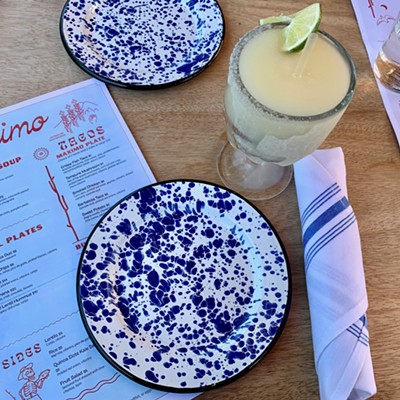The dragonfruit, or pitaya, is known for its great health benefits, and it's touted on the side of juice bottles and energy drinks for its vitamin, fiber and mineral-rich context. Bolder distributors even state that the fruit has been used to treat everything from diabetes to asthma. Really.
Dragonfruit is native to Central and South America, but the fruit was brought to parts of Asia and is mainly imported back here from Thailand instead of Mexico. Despite all the hoopla, the fruit just looks like a strange mango with fin-like fleshy flaps. The inside has a texture like a peeled kiwi, only with the seeds spread out instead of clustered. To pick a proper fruit, select similar to a kiwi -- slightly soft, but not too firm (this would be underripe). The outer skin should be vibrant, without soft spots. Since the pitaya is actually a cactus fruit, there might be a waxy feel to the outside.
Although there are varieties of sour pitaya, mine was sweet. The first thought I had when taking a bite was, "Oh, it tastes like an energy drink." But while it does taste similar to the flavored waters and whatnot, the fresh pitaya is amazingly light and delicate in comparison, and nowhere near as sweet. To eat a dragonfruit without putting it in a smoothie, cut off a little of the fins on each end, half, and peel with your fingers. Slice it up, or just eat it with a spoon.





